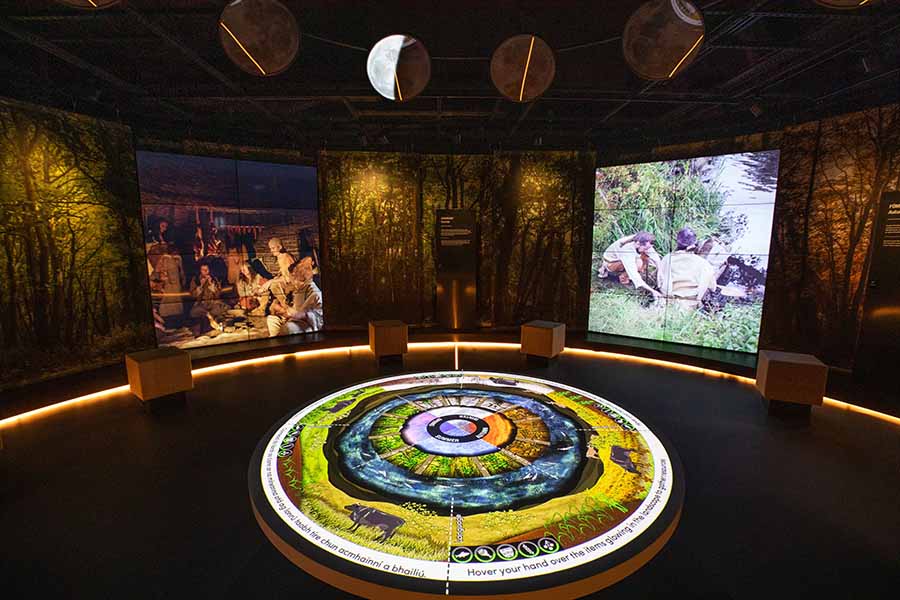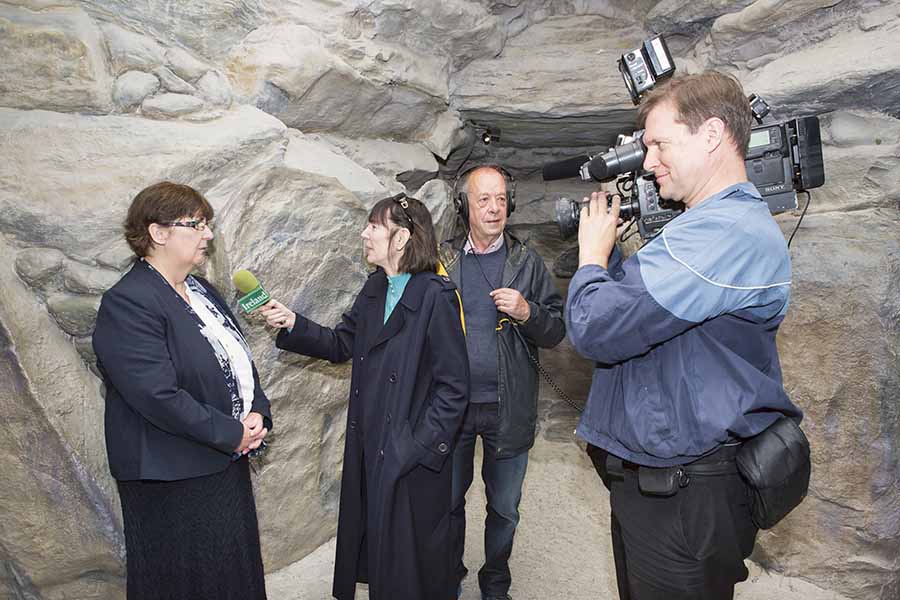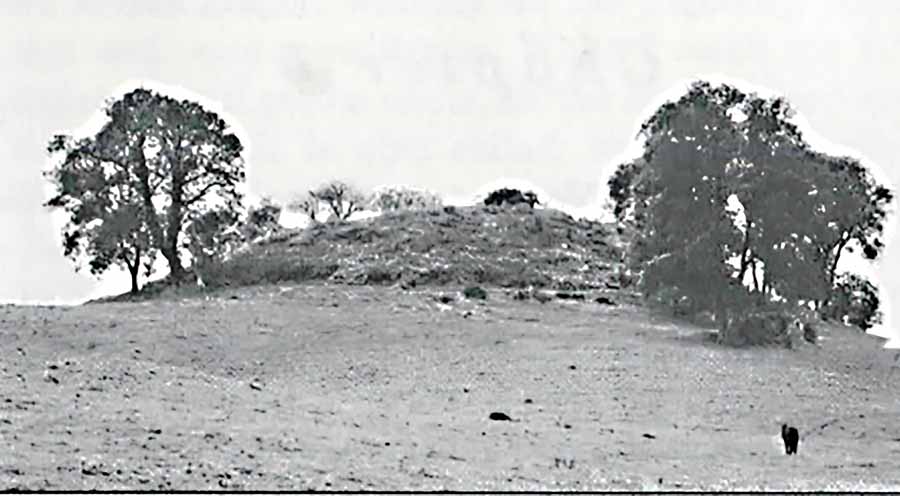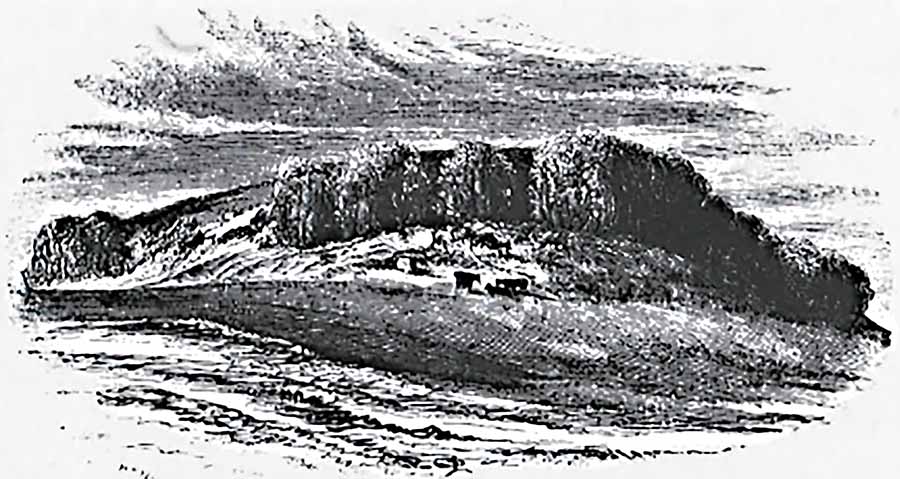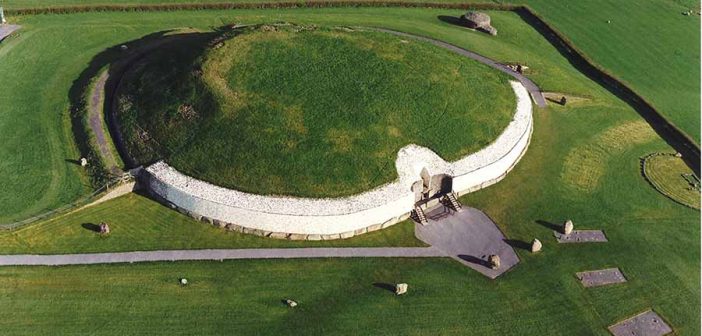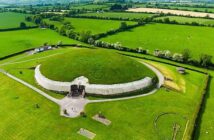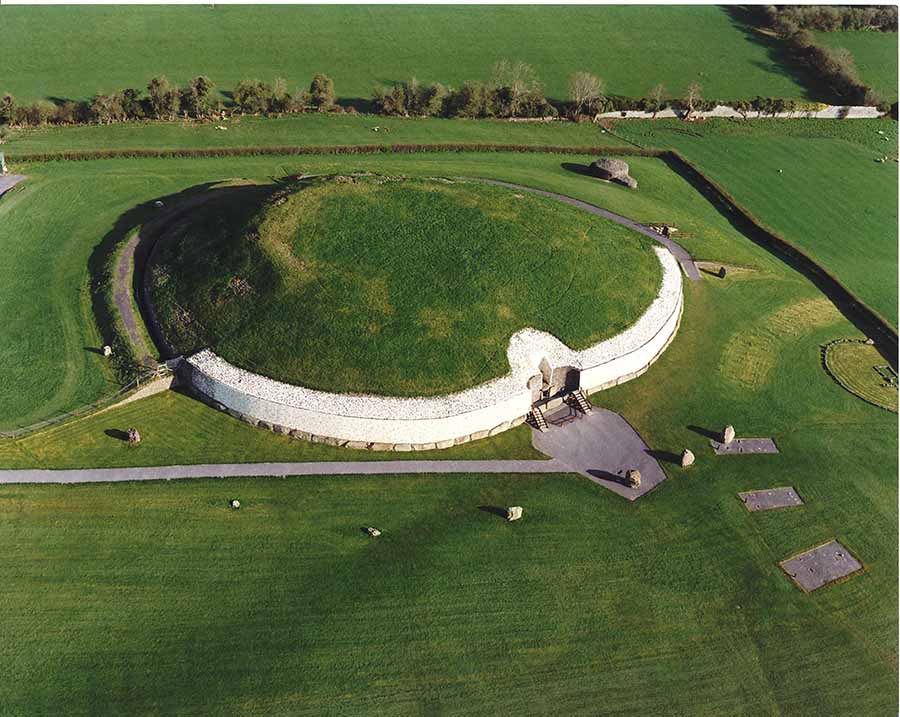
Unlike the first time round, no boulders were moved. And, unlike the first time, it happened at a precise recorded time, the reconstruction of Newgrange, this time the úr-Newgrange of wonder and imagination, thanks to the suspicions of archaeologist Michael O’Kelly.
He had a theory he needed to test, about the mysterious light-box over the door of the entrance tunnel to the burial chamber, and he arrived early on a mid-winter morning to try it out. Famously, Michael’s theory stood this particular test of time, and something moved that morning, something even bigger than any giant boulder, our entire understanding of the history of ancient Ireland.
His diary notes: ”At exactly 8.54 GMT the top edge of the ball of the sun appeared over the local horizon. At 8.58 the first pencil of direct sunlight shone through the roofbox and along the passage to reach across the tomb chamber floor as far as the front edge of the basin stone in the end recess. As the thin line light widened to a 17 centimetre band and swung across the chamber floor the tomb was dramatically illuminated. And various details of the side and end recesses could be clearly seen in the light reflected from the floor.”
Since that sunrise on December 21st 1967, the fame of Newgrange has spread around the world, an observatory rather than a mausoleum, once rated the oldest engineered building in the world (although Göbekli Tepe in Türkiye may have taken that mantle), and immediately gentrified the entire nation of people who had built it in 3,200 BC, giving them superstar status among the ancients.
The earth’s position has changed since Newgrange was built, so the sun now enters the chamber about four minutes after sunrise. On a clear day the inner chamber will be lit for 17 minutes.
Dozens of books have been published promulgating new-age (and not so new-age) theories about lost elaborate astronomical observatories, long lost religious ceremonials communicating with mother earth, and an elaborate annual light show, using mirrors, to a stadium size cheering crowd gathered on the riverbank below (an English newspaper theorised that the markings on the entrance stone indicated where magic mushrooms could be found).
Until comparatively recently, Newgrange was just another bump on a riverbend. The location and its passage was “discovered” in 1699 by Welsh antiquary Edward Llwydd who pronounced the megalithic art on the entrance stone as “barbarous.” The passage tomb was opened and visitors were allowed to roam and poke inside.
A second astonishing find
The excavation in the 1960s revealed a very small number of human remains, just five. Michael O’Kelly and George Eogan’s led to the controversial reconstruction of the dilapidated mound in white stone to recreate their vision of what the original had looked like. The antiquity of the light box, which allows light to enter the passage tomb, has been questioned and whether there ever was an original. O’Kelly, who died in 1983, contended that the purpose of the entire construction would be defeated unless there was a light box (or taller doorway) in the first place.
The Newgrange we see today was the realisation of O’Kelly’s vision. While the passage tomb is as he found it, the surround is a reconstruct. The quartz that partially coats the building is inspired by the fragments that he found, and had to be transported considerable distance by people who had no access to wheels or horses. The triads of Ireland described Newgrange as “brilliant in approach.” A visit by Listowel born writer Bryan MacMahon in 1966 led him to conjure: “at one time the bare quartz stones of the exterior must have sparkled in the sunshine to evoke in our forefathers vague thoughts of the land beyond beyond.” But even the ancient Triads were written 4,000 years after the heyday of Newgrange, in a language that had not been invented
In time, further discoveries kept coming. In the 2000s, new technology led to a second astonishing find. DNA testing on human remains in the inner chamber suggest the man buried there was the offspring of incest, perhaps even brother and sister, breaking the taboos of society then and now, but resembling the God-king legends found in ancient Egypt and other ancient societies.
The same DNA research revealed that the man buried at Newgrange had familial connections with individuals buried at other Neolithic passage tombs in Ireland, such as Carrowmore and Carrowkeel in Co. Sligo, and the tomb at Millin Bay in Co. Down. This highlights a network of ancestral relationships across ancient Ireland, suggesting he was a member of a kingly class that ruled 3,500 years before the arrival of written records.
There may be two more chambers to the rear of the monument, according to a micro-gravity survey and geo-radar scan of the site by Mayo-based archaeological geophysicist Kevin Barton. alongside Slovakian geophysicists Roman Pasteka, Pavel Zahorec, Juraj Papco and Ema Nogova.
Second wave
Genetic analysis of the human remains found inside indicate that the builders of the monument at Newgrange belonged to a second wave of immigrants to Ireland. These were Ireland’s earliest farmers, who migrated to Ireland and replaced the previous Mesolithic hunter-gatherer population, according to the new book of Invasions revealed by the sequencing of double helix DNA data to the team at Trinity College led by Lara Cassidy. These revealed three waves of invasion, in form and sequence similar, sometimes uncannily so, to the six listed in the Lebor Gabála, the book of invasions of literature that inspired a Horslips album. The findings suggest a population replacement rather than forced displacement or extermination.
The first to come were the hunter gatherers. Originally from the Ukraine, they arrived around 7,000BC. Their population never exceeded 8,500. They carried an unusual combination of dark skin and blue eyes, like modern Berbers, and were short in stature.
The second, the builders of Newgrange, arrived around 4500BC, bringing grain and animal husbandry, before disappearing in turn around 2300BC. Their DNA tracks back to Iraq, Syria and the Bible lands, the fertile crescent. It would be nice to claim modern ireland descended from the builders of Newgrange, but the gap in the DNA record suggests otherwise. Perhaps there is a forgotten contemporary lesson from the knowledge the earliest “native” Irish people, including the builders of our celebrity archaeological monument, arrived on the island from Ukraine and Syria.
Then us. The third wave of immigration arrived around 500BC. Their language was Celtic, the ancestor of modern spoken Irish, and the DNA is related most closely to the peoples of the Basque country. Seánie come lately.
An immersive experience
Since 1967, Newgrange has enjoyed its position as Ireland’s celebrity archaeological monument, first stop for many visitors to Ireland. Celebrity comes with a price. The annual solstice sunrise is the preserve of a small number of invited guests, but the others who wanted to clamber through in increasing numbers began to cause damage to the ancient remains.
To protect the monument a new visitor centre was opened on the other side of the River Boyne in 1997 and visitor numbers to the original passage tomb capped at 650 a day. Pre-pandemic, 160,000 visitors a year visited Newgrange visitor centre. Visits to the tomb are not pre booked and allocated on a first-come basis every day.
The centre underwent a facelift during the pandemic and Brú na Bóinne Visitor Centre was transformed into an immersive experience rather than a simple visit.
The refurbished centre allows visitors to imagine themselves back in the Neolithic period, surrounded by sights and sounds of that era. Real people dressed as Stone Age inhabitants are featured in videos, creating a more authentic experience.
The exhibition includes a unique sound escape with recorded sounds of animals and birds that lived in Ireland during the Neolithic period, creating a peaceful and immersive environment.
The Brú na Bóinne site is much more than Newgrange. The passage tombs at Knowth (extensively excavated) and Dowth (not excavated and not open to the public) and their treasury of art are about 1,000 years older than their celebrity neighbour. The astronomical significance of Knowth, if it exists, has not yet been revealed. At Dowth, the rays of the setting sun alight the passage chamber around d the time fo the winter solstice.
The new exhibition celebrates the artists who created the prehistoric art at the site, the world’s greatest collection of prehistoric art, about a third of the known megalithic art in Europe.
It is always worth a visit, solstice light show or not.

